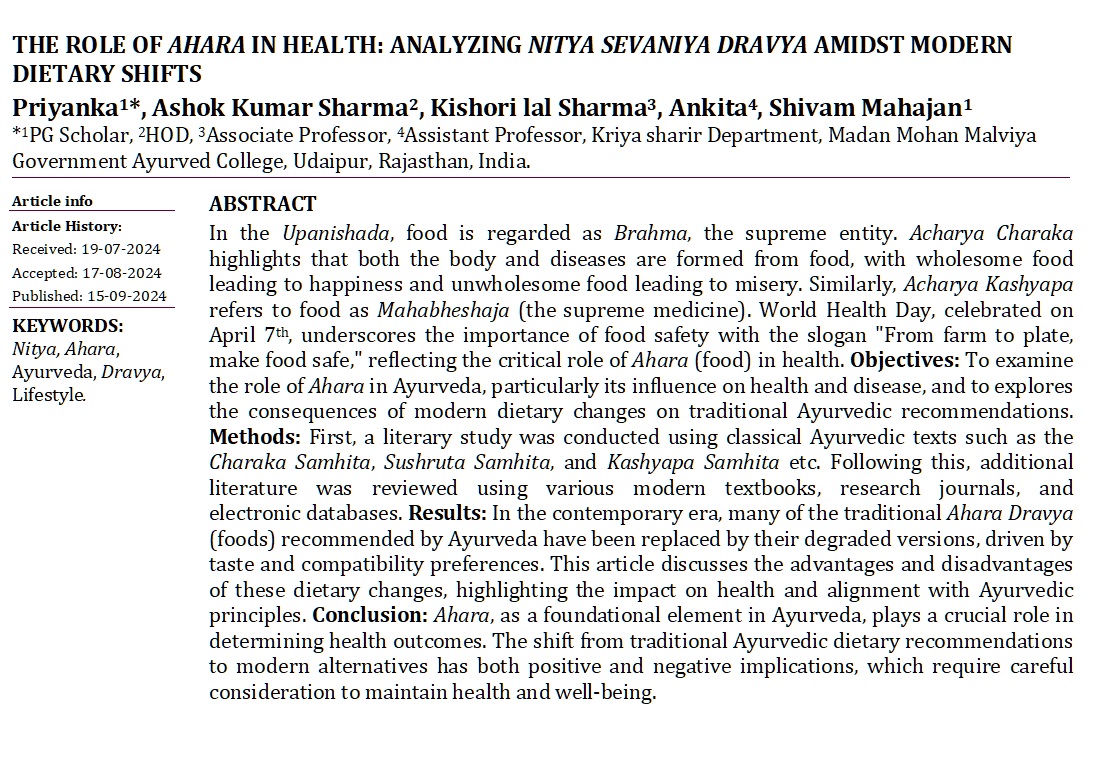The Role of Ahara in Health: Analyzing Nitya Sevaniya Dravya Amidst Modern Dietary Shifts
DOI:
https://doi.org/10.47070/ayushdhara.v11i4.1698Keywords:
Nitya, Ahara, Ayurveda, Dravya, LifestyleAbstract
In the Upanishada, food is regarded as Brahma, the supreme entity. Acharya Charaka highlights that both the body and diseases are formed from food, with wholesome food leading to happiness and unwholesome food leading to misery. Similarly, Acharya Kashyapa refers to food as Mahabheshaja (the supreme medicine). World Health Day, celebrated on April 7th, underscores the importance of food safety with the slogan "From farm to plate, make food safe," reflecting the critical role of Ahara (food) in health. Objectives: To examine the role of Ahara in Ayurveda, particularly its influence on health and disease, and to explores the consequences of modern dietary changes on traditional Ayurvedic recommendations. Methods: First, a literary study was conducted using classical Ayurvedic texts such as the Charaka Samhita, Sushruta Samhita, and Kashyapa Samhita etc. Following this, additional literature was reviewed using various modern textbooks, research journals, and electronic databases. Results: In the contemporary era, many of the traditional Ahara Dravya (foods) recommended by Ayurveda have been replaced by their degraded versions, driven by taste and compatibility preferences. This article discusses the advantages and disadvantages of these dietary changes, highlighting the impact on health and alignment with Ayurvedic principles. Conclusion: Ahara, as a foundational element in Ayurveda, plays a crucial role in determining health outcomes. The shift from traditional Ayurvedic dietary recommendations to modern alternatives has both positive and negative implications, which require careful consideration to maintain health and well-being.
Downloads

Downloads
Published
Issue
Section
License
Copyright (c) 2024 AYUSHDHARA

This work is licensed under a Creative Commons Attribution-NonCommercial-ShareAlike 4.0 International License.


